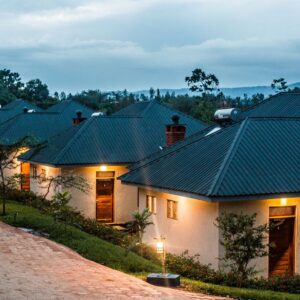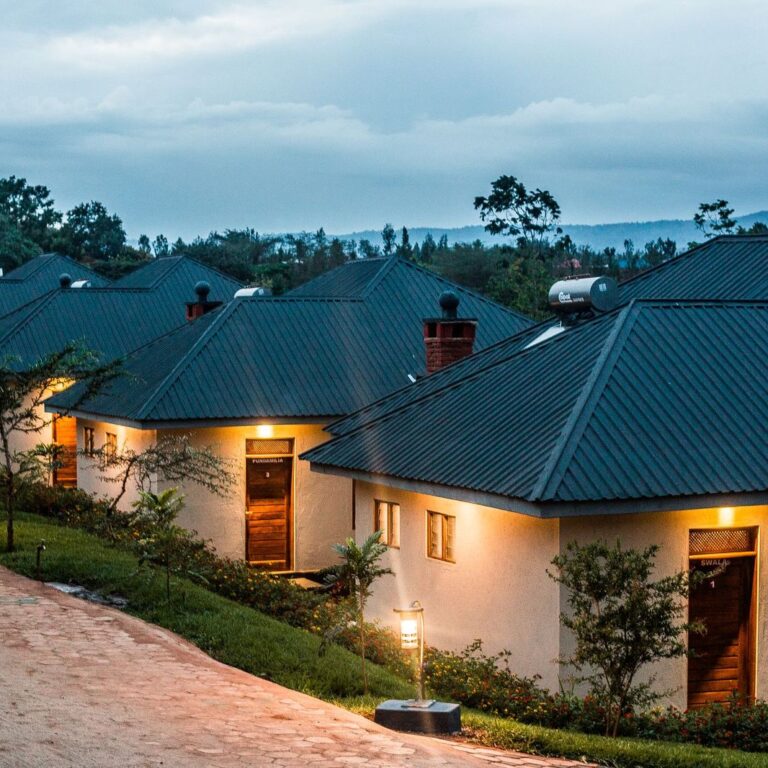The Rainforest Zone of Kilimanjaro – What’s it Like?
Exploring the Enigmatic Rainforest Zone of Kilimanjaro: Welcome to the breathtaking realm of the Rainforest Zone of Kilimanjaro. Nestled within the majestic slopes of Africa’s highest peak, this verdant paradise offers a mesmerizing blend of biodiversity and natural wonders. In this comprehensive guide, we’ll delve into the enchanting allure of this unique ecosystem, uncovering its mysteries and highlighting its significance.
Rainforests, featured by their dense vegetation and high levels of rainfall, are among the most diverse ecosystems on Earth. They are home to an astonishing array of plant and animal species, many of which are found nowhere else. The canopy of a rainforest, formed by the interconnected branches and leaves of towering trees, creates a unique microclimate below, where humidity levels are high and sunlight is filtered through the foliage.
Geographical location Overview
The Rainforest Zone of Kilimanjaro is situated on the lower slopes of the iconic Mount Kilimanjaro, spanning an altitude range of approximately 2,800 to 3,500 meters above sea level. This lush region is featured by its dense canopy of towering trees, vibrant vegetation, and a myriad of endemic species.
Climate and Biodiversity
Climate: The climate in the Rainforest Zone is typically humid and tropical, with abundant rainfall throughout the year. Temperatures range from mild to warm, creating an ideal habitat for a diverse array of flora and fauna.
The climate is warm and humid, with temperatures rarely falling below 68°F (20°C). High humidity levels (between 77% and 88%) create a consistently warm environment.
Frequent rainfall (some areas receive over 100 inches annually) supports dense vegetation. The rainforest has distinct layers: emergent trees, a dense canopy, an understory, and the forest floor. Stratification allows for a remarkable variety of plant species, including towering trees, ferns, vines, and flowering plants.
Biodiversity: This region boasts unparalleled biodiversity, housing a rich assortment of plant and animal species. From ancient hardwood trees to elusive primates and colorful birdlife, the Rainforest Zone teems with life at every turn.
The Environmental Role of Rainforests
Beyond their biodiversity, rainforests play a crucial role in maintaining the health of our planet. They act as carbon sinks, absorbing large amounts of CO2 through photosynthesis, acting as carbon sinks./of carbon dioxide from the atmosphere and helping to mitigate climate change. Additionally, they regulate regional weather patterns, contribute to the water cycle, and provide vital habitat for countless species.
Discovering Kilimanjaro’s Rainforest
Nestled on the slopes of Africa’s highest peak, Mount Kilimanjaro, lies a nice expanse of rainforest. This verdant oasis, known as the Rainforest Zone, is a stark contrast to the barren, snow-capped summit above. Here, moss-covered trees tower overhead, their branches draped in cascades of epiphytic plants. The air is thick with the sounds of chirping birds, buzzing insects, and the occasional rustle of small mammals moving through the undergrowth.
Birdwatching Expeditions
Set out on birdwatching trips to spot an array of avian species. From vibrant turacos and sunbirds to majestic birds of prey soaring high above the canopy. Embark on birdwatching journey in Kilimanjaro’s Rainforest Zone and marvel at the diverse avian life that calls this pristine habitat home. Discover rare and endemic species amidst the verdant foliage.
Cultural Immersion Experiences
Participate in cultural immersion experiences, such as traditional dance performances, storytelling sessions, and visits to local markets, to gain a deeper understanding of the Chagga way of life.
Tips for Tackling Kilimanjaro’s Rainforest
For those going on the adventure of climbing Kilimanjaro, traversing the Rainforest Zone is often the first leg of the journey. Here are some essential tips for facing this lush and vibrant environment:
- Pack Appropriately: Be sure to bring lightweight, moisture-wicking clothing and sturdy hiking boots to navigate the muddy trails.
- Stay Hydrated: With high humidity levels and exertion from hiking, staying hydrated is key. Carry plenty of water and consider using a hydration pack for easy access.
- Apply Insect Repellent: Rainforests are notorious for their insect populations. Apply insect repellent to exposed skin to ward off mosquitoes and other pests.
- Respect Wildlife: Remember that you are a guest in the animals’ home. Keep a respectful distance, refrain from feeding wildlife, and never attempt to touch or approach them.
- Follow Local Guides: Enlist the expertise of local guides who are familiar with the terrain and can offer invaluable insights into the flora and fauna of the Rainforest Zone.
Conservation Challenges
Despite their ecological significance, rainforests around the world face numerous threats, including deforestation, habitat destruction, and climate change. Kilimanjaro’s rainforest is no exception. As tourism to the area increases, so too does the pressure on this fragile ecosystem. Conservation efforts are underway to protect and preserve the Rainforest Zone for future generations to enjoy.
Amazon: The World’s Largest Rainforest
While Kilimanjaro’s rainforest is awe-inspiring in its own right, it pales in comparison to the vastness of the Amazon Rainforest. Spanning nine countries and covering over 5.5 million square kilometers, the Amazon is the largest tropical rainforest on the planet. Its sheer size and biodiversity make it a global treasure and a critical component of Earth’s ecological balance.
What is the Rainforest Zone of Kilimanjaro?
The Rainforest Zone of Kilimanjaro is a lush and biodiverse region situated on the lower slopes of Mount Kilimanjaro in Tanzania. It is characterized by dense vegetation, abundant wildlife, and a humid tropical climate.
What makes the Rainforest Zone unique?
The Rainforest Zone is unique for its rich biodiversity, including endemic plant and animal species found nowhere else on earth. It also holds cultural significance as the traditional homeland of the Chagga people.
What is the best time to visit the Rainforest Zone?
The best time to visit the Rainforest Zone is during the dry seasons, which typically occur from January to February and from June to October. During these months, the weather is more favorable for trekking and wildlife viewing.
What activities can I enjoy in the Rainforest Zone?
Visitors to the Rainforest Zone can enjoy a variety of activities, including guided nature walks, birdwatching expeditions. Cultural immersion experiences, and visits to iconic attractions such as Materuni Waterfalls and Marangu Village.
Is it safe to visit the Rainforest Zone of Kilimanjaro?
Yes, the Rainforest Zone is generally considered safe for visitors. However, it is essential to follow safety guidelines, such as staying on designated trails. Respecting wildlife, and listening to the advice of experienced guides.
Encircling the whole of the mountain is a montane or tropical rain forest. Dense and damp, this forest is home to many different bird and animal species. Due to the increase in human activity, it’s rare to see any big game these days, but monkeys and birds abound.
What should I pack for a trip to the Rainforest Zone?
Essential items to pack for a trip to the Rainforest Zone include lightweight clothing. Sturdy hiking shoes, insect repellent, sunscreen, a hat, and a reusable water bottle. It’s also advisable to bring rain gear, as the weather can be unpredictable.
Are there any accommodations available in the Rainforest Zone?
Yes, there are various accommodation options available in the Rainforest Zone, ranging from eco-lodges and guesthouses to campsites. These accommodations offer comfortable and sustainable lodging amidst the natural beauty of the forest.
How do I get to the Rainforest Zone of Kilimanjaro?
The Rainforest Zone can be accessed from nearby towns and cities in Tanzania, such as Moshi and Arusha. Visitors can arrange transportation through private transfers. Public buses, or guided tours to reach the entrance gates of Mount Kilimanjaro National Park.
Are guided tours available in the Rainforest Zone?
Yes, guided tours are available in the Rainforest Zone. Providing visitors with the opportunity to explore the area with knowledgeable local guides. These tours offer insights into the region’s ecology, wildlife, and cultural heritage.
What wildlife can I expect to see in the Rainforest Zone?
Wildlife commonly spotted in the Rainforest Zone includes black and white colobus monkeys. Blue monkeys, duikers, various bird species, and occasionally larger mammals such as elephants and leopards. Nearly all of the routes on the mountain begin and end in the rainforestzone. It is situated between 6,000 and 9,200 feet (1,800 and 2,800 meters). Unlike other rainforests which are large expanses of land, Kilimanjaro’s rainforest is a narrow band encircling the mountain.







